7 Varieties of Lawn Mushroom: Identification, Pictures & FAQ
-
Ed Malaker
- Last updated:
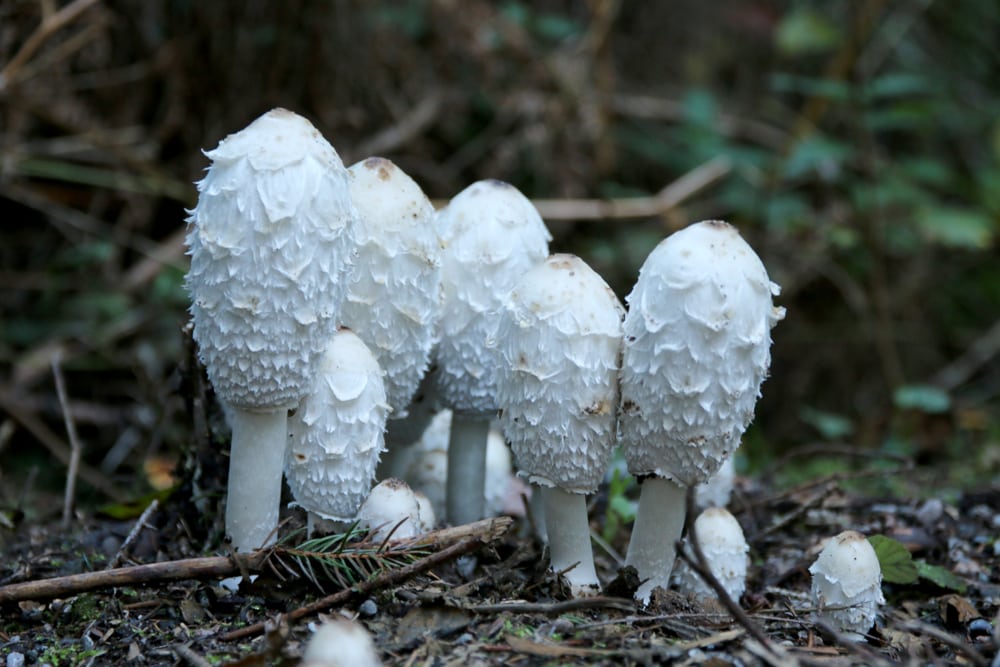
Mushrooms on your lawn can mean several things. They are usually present in nutrient-rich soils, but they can also mean your plants are more at risk of disease. They can be a sign of poor drainage, poor circulation, and even compacted soil. Keep reading as we look at the different types of mushrooms that you are likely to find in your yard and what they can mean.
The 7 Various Types of Lawn Mushroom
1. Shaggy Ink Cap
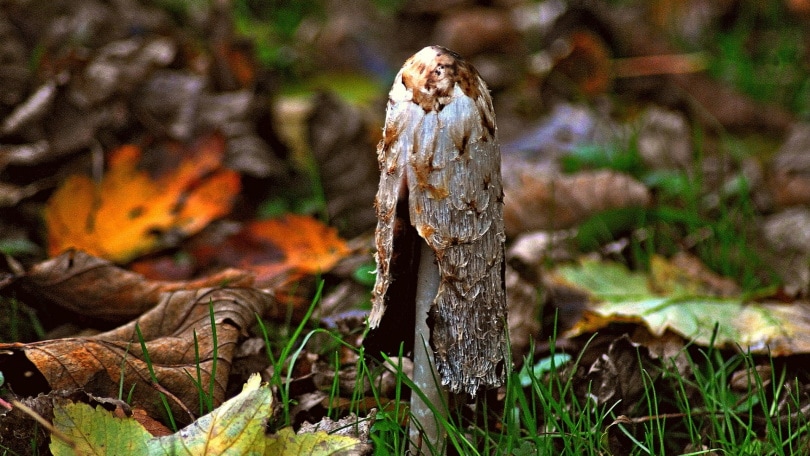
| Edible | Yes |
| Beneficial | Yes |
| Height | 3.5–10 inches |
The Shaggy Ink Cap is a common mushroom that you can find in many yards. It’s quite large and has a wooly or shaggy appearance. It’s white when it’s young but turns black as it ages. You can eat it before it changes color. These mushrooms tend to grow in small clumps and attract nematodes, tiny soil worms that benefit your lawn.
2. Honey Fungus
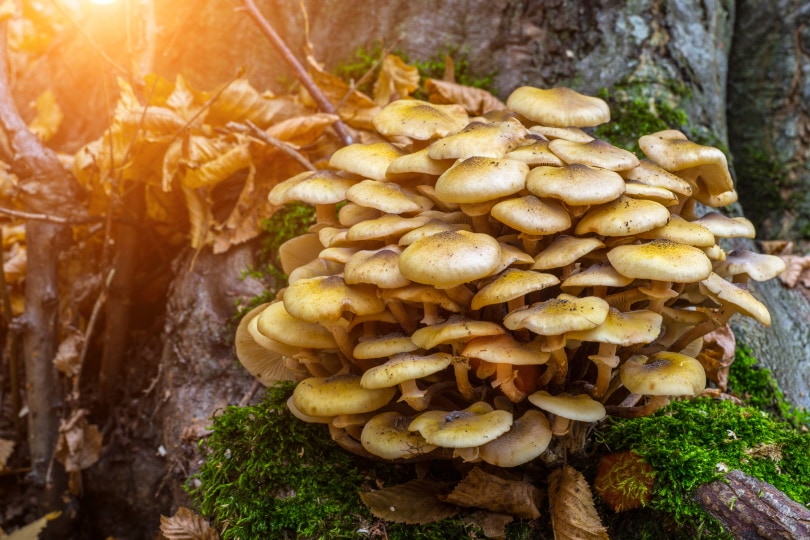
| Edible | Yes |
| Beneficial | Yes |
| Height | 6 inches |
The Honey Fungus mushroom is a parasitic variety that you can find in many yards. It’s a small mushroom that grows in clumps up to 6 inches long at the base of trees or on fallen logs. It affects the roots, stems, and trunks of living plants and trees. By the time you see the mushrooms, a white film of the fungus is traveling through your yard. It can grow more than 3 feet per year, and there are no chemical treatments to eliminate it. The best way to prevent it is by removing all dead trees, along with their roots. They are edible, but some people do experience discomfort after doing so.
3. Green Gill
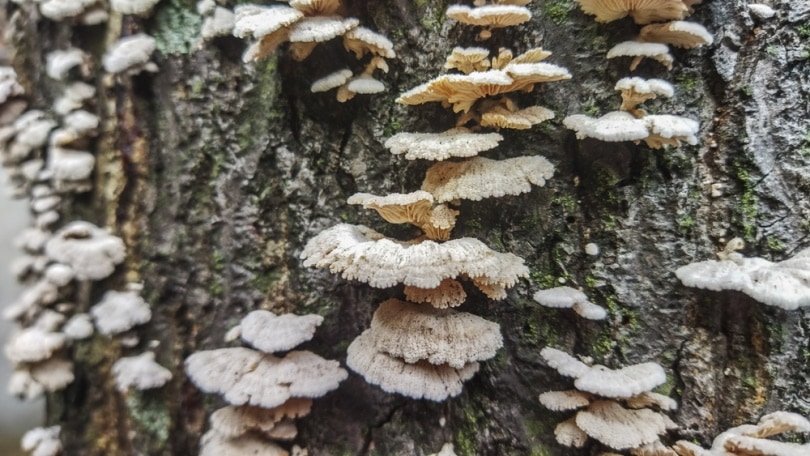
| Edible | No |
| Beneficial | Yes |
| Height | 6 inches |
The Green Gill is so named because it is the only large mushroom with a green spore print. It can grow up to 6 inches tall, with a cap that can reach 12 inches in diameter. It has many other names, including False Parasol and Green Spored Parasol, and many people mistake it for a Meadow Mushroom. Unfortunately, unlike the Meadow Mushroom, the Green Gill is poisonous, and consuming it can cause serious gastrointestinal problems and may even be fatal. It is white or whitish-brown and grows in clumps in grassy areas.
4. Meadow Mushroom
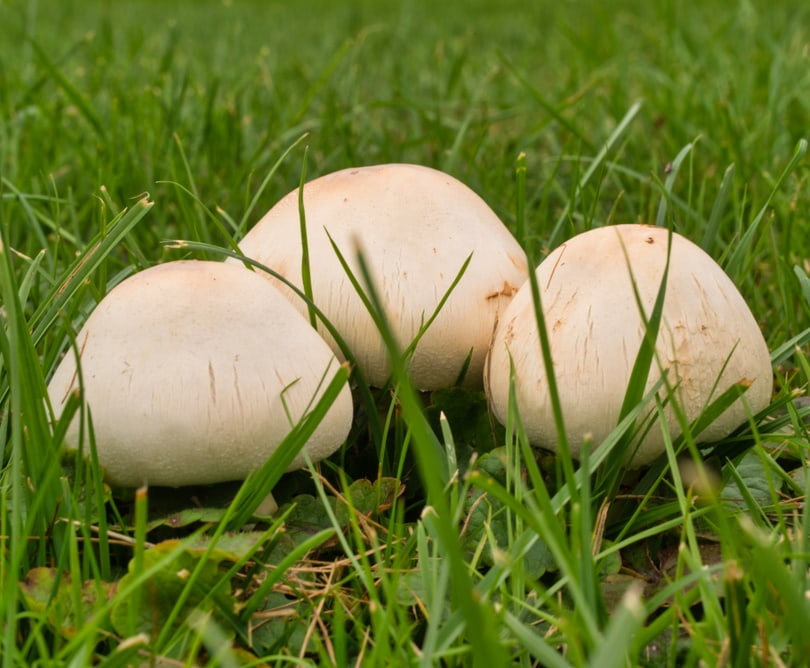
| Edible | Yes |
| Beneficial | Yes |
| Height | 2 inches |
If you like the flavor of mushrooms, the Meadow Mushroom is sure to be a great find, and they grow in yards all across the United States. It’s a small mushroom that gets to about 2 inches tall and has a white cap with brown gills that can be as wide as 4 inches. Proper identification is important because many people mistake the Green Gill or the Destroying Angel for the Meadow, and those mushrooms are poisonous.
5. Destroying Agnel
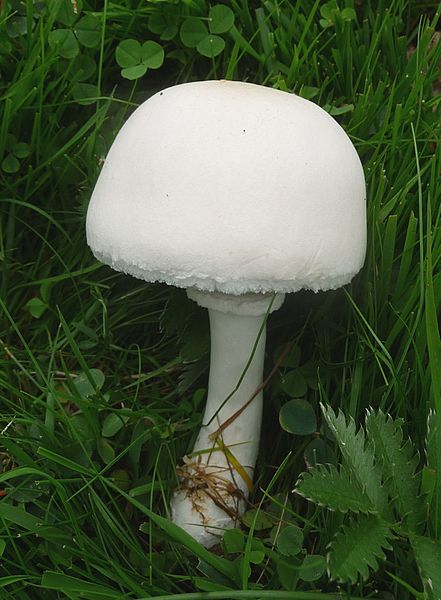
| Edible | No |
| Beneficial | Yes |
| Height | 5.5 inch |
The Destroying Angel is a light-colored mushroom that many people mistake for the tasty Meadow Mushroom. Consuming this mushroom by accident can be deadly. While these mushrooms prefer living in the forest, finding them in your yard is possible, especially in a wooded area. They are different from the Meadow Mushroom in that the Destroying Angel is larger, growing more than 5 inches tall, with a cap reaching 4 inches in diameter.
6. Stinkhorn Fungus

| Edible | Yes |
| Beneficial | Yes |
| Height | 3–9 inches |
The Stinkhorn Fungus is a phallic-shaped fungus that has gone by many other names throughout history. It usually stands between 3 and 9 inches tall and has a terrible odor that many people liken to rotting flesh. The bad smell helps attract flies that spread the spores. You will usually find these mushrooms around trees, and you can eat them at certain stages of their growth.
7. Birds Nest Fungi

| Edible | No |
| Beneficial | Yes |
| Height | 1 inch |
You will find Birds Nest mushrooms growing on decaying matter, and they are highly beneficial to your yard. They get their name from their strange shape that resembles a bird’s nest, which helps catch rainwater to aid in dispersing spores. Science has found several health benefits for this mushroom, and it may even help prevent certain types of cancer.
Are Mushrooms Bad for My Yard?
Not usually. Mushrooms feed on decaying organic matter, from dead trees to old grass clippings, and help transform them into important nutrients that will make your yard look better and your flowers and vegetables grow better. Unfortunately, a few mushroom varieties are harmful to the plants around them, though only the Honey Fungus on this list is common to yards.
Are Mushrooms Poisonous?
Unfortunately, many varieties of mushrooms are poisonous. You will need to be careful about identifying those that are safe to consume if you like to hunt for them in the wild.
How Can I Prevent Mushrooms From Growing in My Yard?
Remove Dead Trees
One of the best ways to prevent the harmful Honey Fungus mushroom from growing on your property is to remove any dead trees. Be sure to remove the roots and stump, or the mushrooms will grow there.
Use a Lawnmower Bag
Using a lawnmower bag to catch the grass clippings as you cut can help reduce the amount of food available for mushrooms to eat.
Use Vinegar
Mixing one part vinegar with four parts water will create a solution that you can spread over the area where mushrooms grow to create an environment that they don’t like. However, this solution also risks harming nearby plants, so use it with caution.
Conclusion
If you like to eat mushrooms, the best variety that you can find is the Meadow Mushroom, which has a great taste by itself or used in many dishes and soups. However, you need to make sure you do not confuse it with the Green Gill or the Destroying Angel, which are poisonous. In most cases, mushrooms are a sign that your lawn is functioning properly and is maintaining itself, but the Honey Fungus can be harmful to your trees and plants.
See also:
- How to Grow Mushrooms Indoors — 4 Tips, Tricks, and Guide
- Do Mushrooms Have Roots? What Do They Have?
Featured Image Credit: Kumpf, Shutterstock
Contents
